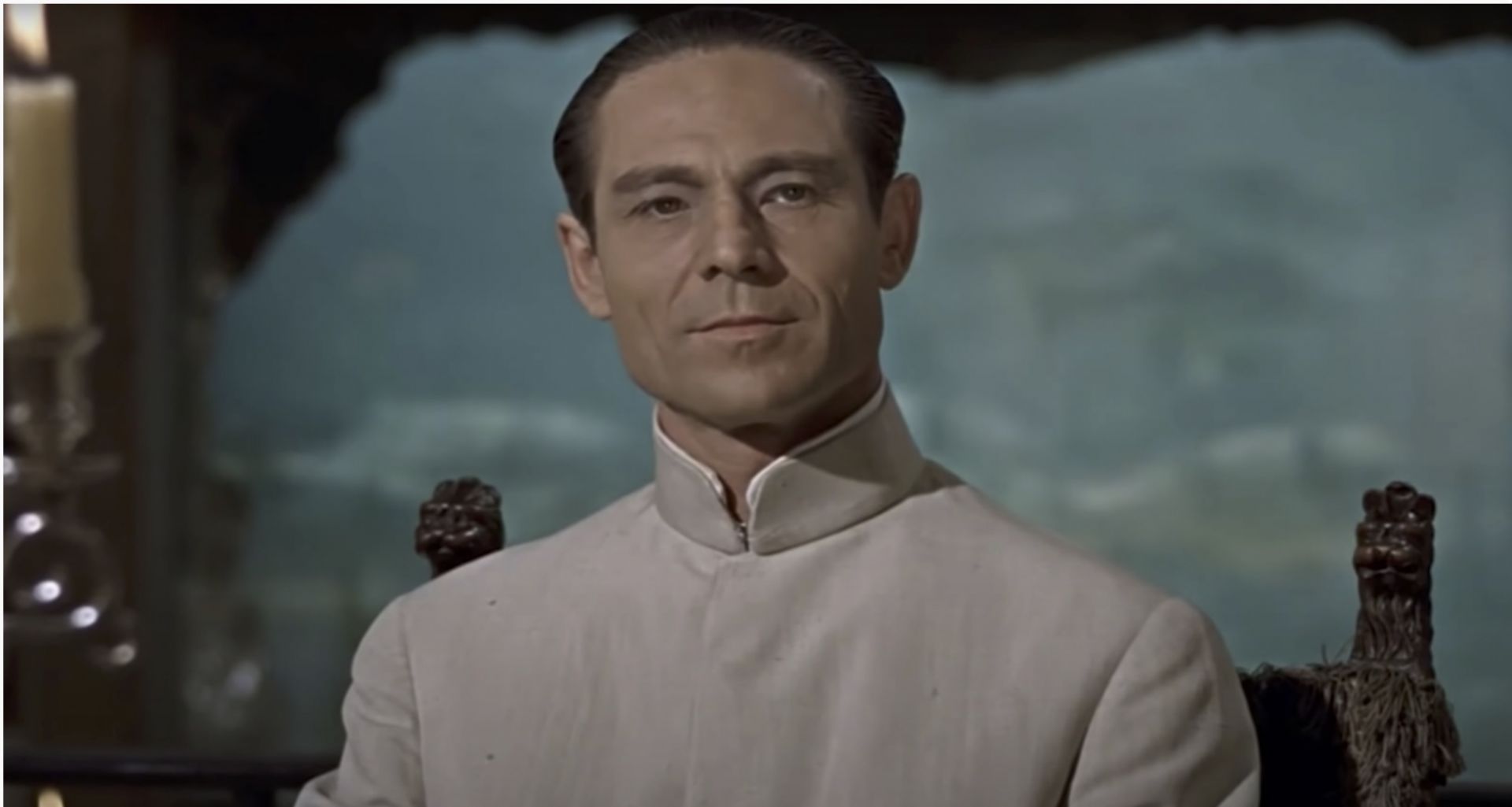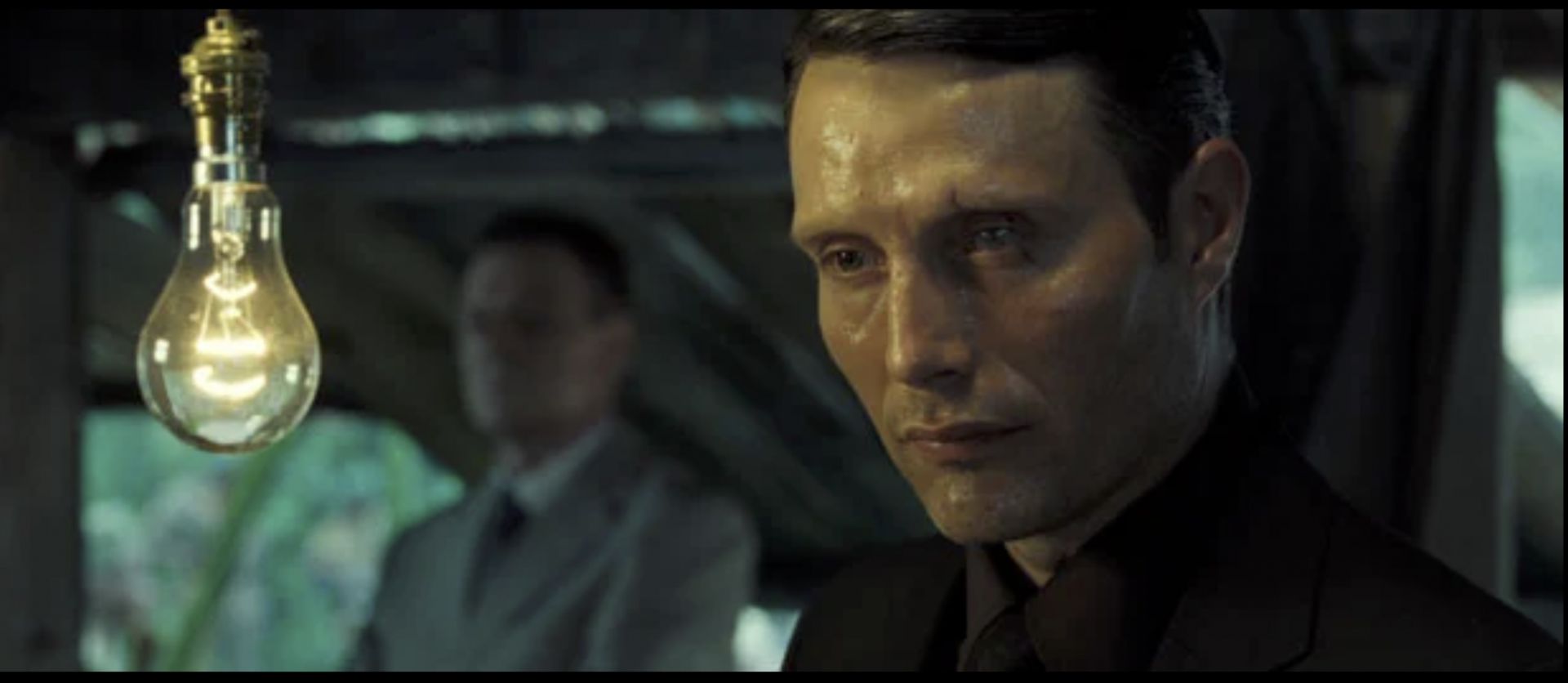Caustics. The amazing living water pattern has become the signature background lighting star for James Bond villains, movies about the sea, and anytime you want to add movement to a dialogue scene, or spruce up a background without actually moving the camera.
So depending on the film, 70 to 80 percent of a feature film is just two people talking.
They can be standing at a bar, walking by the seaside, or driving in a car. But if you go into narrative filmmaking you need to work out how to make these scenes come alive. The default way to do this is by moving the camera either in an arc so that the background gets parallax or moving the person and the camera like a walk and talk but this, isn't always possible.

Sometimes you just need to put the camera on a tripod, point it at someone's face, and let the actor do the talking. But, cinematographers still love adding movement to the frame just because it brings the frame to life.
Lighting Bond Villains
Often you'll have people walking back and forth in the background. It just serves to give the frame some life and avoid just shooting someone in front of a wall spouting dialogue. A great way that the James Bond films have been doing this for a long time, and other films have followed, is by using Caustics.

This is the reflection from moving water. Water being translucent partly reflects and partly absorbs light shined into it. The reflection forms these beautiful caustic patterns. They are hypnotic and they really serve to add movement to a frame, add mystery to a character, and basically make your shot look more high production.
The Shape of Water
There are a couple of ways to do this. If you have a large body of water like a swimming pool, you can put a light at the bottom, and as it passes through the surface of the water, it will pick up those patterns. Rarely do you have a swimming pool on set. More often you're going to want to bounce light into the water and as it's reflected you're going to get a caustic pattern at a corresponding angle.
Now you want to use the hardest light you have to do this. If you use a tube library like a light panel you're not going to get those nice hard edges; they'll be too soft. So you want to use a mono light and the speed and movement of the caustic pattern will correspond to how much or how little you agitate the water that you're using. You will need someone during the take to be moving the water around so that the pattern moves. You could also agitate at the start of the take and have it slowly settle down as the tape goes on, but this may cause you continuity errors.
Adding color is a great idea that you can do by either gelling the light or using an RGB LED. In big movies shot over a long period of time, they have some kind of water pump to agitate the water in a specific way for a specific duration. That way they don't run into continuity errors.

Shocking RevelationAnytime you are working with electricity and water side by side you need to be so careful because nobody wants to die on set if possible. Work with a waterproof LED so if it falls into the water, nothing's going to happen. Failing that, use battery power rather than the main’s power so that the potential shock is limited to the volts of the battery.
If you have to use the main’s power, make sure that the light is far enough away from the water that if it fell it wouldn't land in the water and potentially electrocute somebody. People have absolutely died doing this, so exercise caution.
That is my look at using caustics to enliven your dialogue scenes and channel a little bit of James Bond's villains from Dr. No to Safan.





